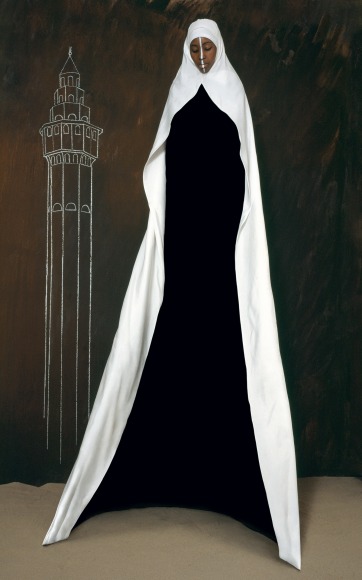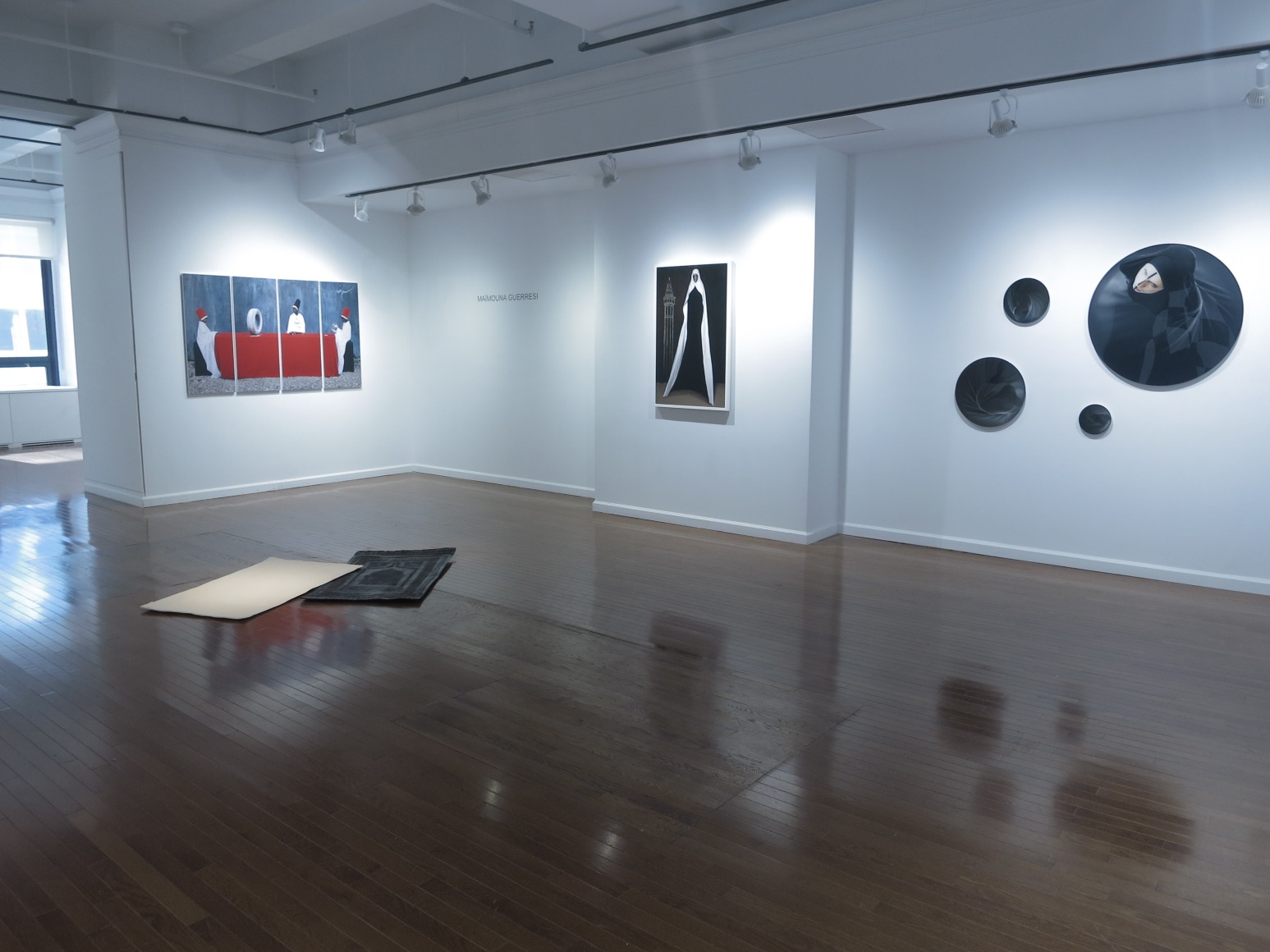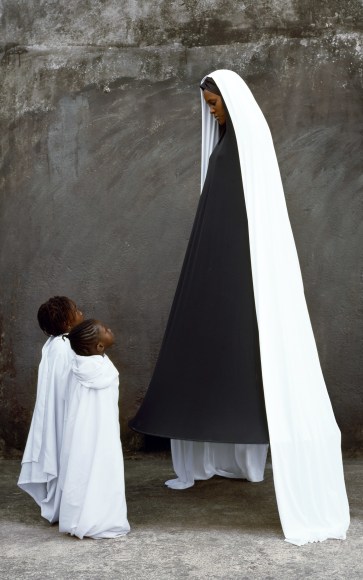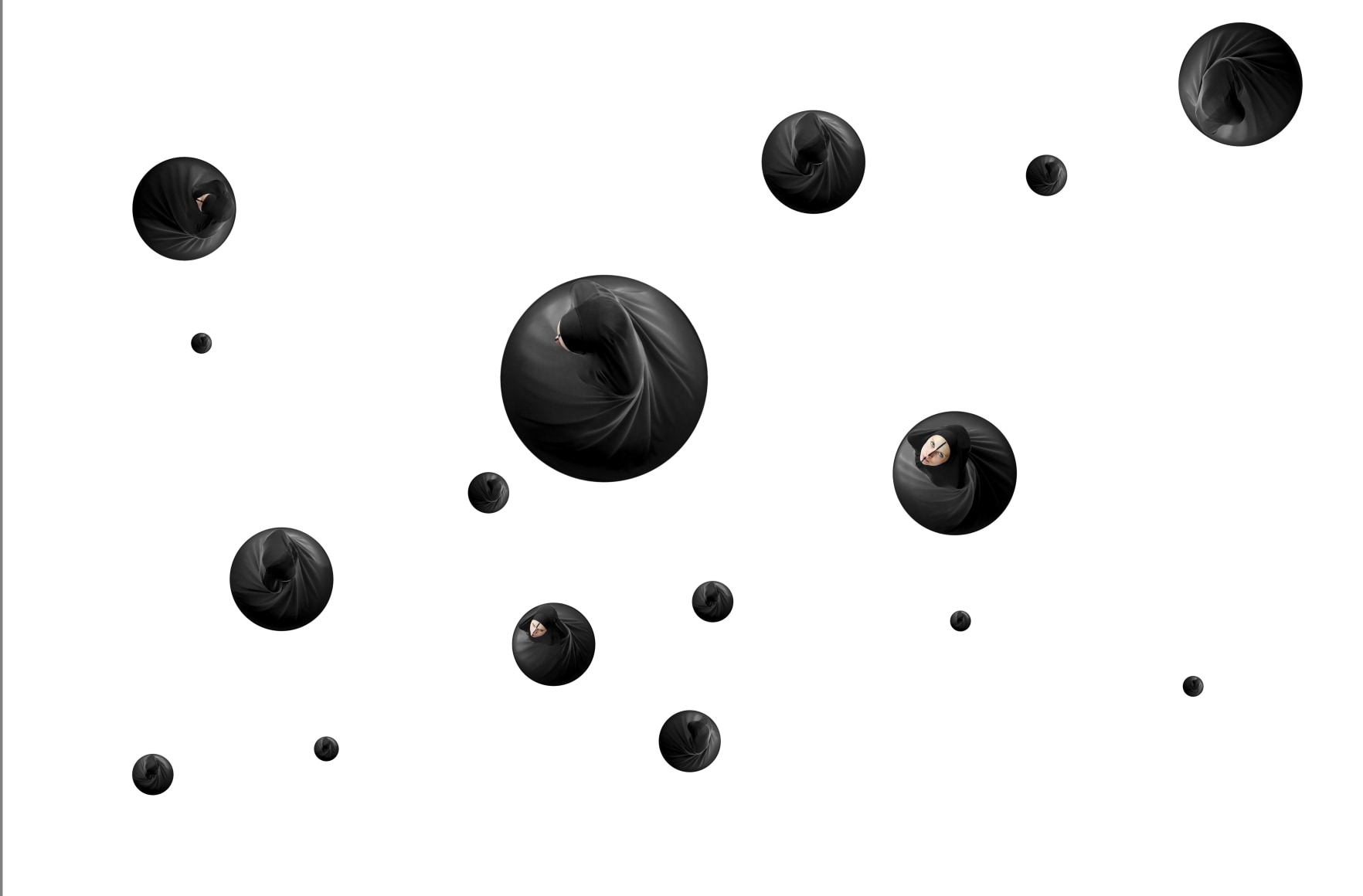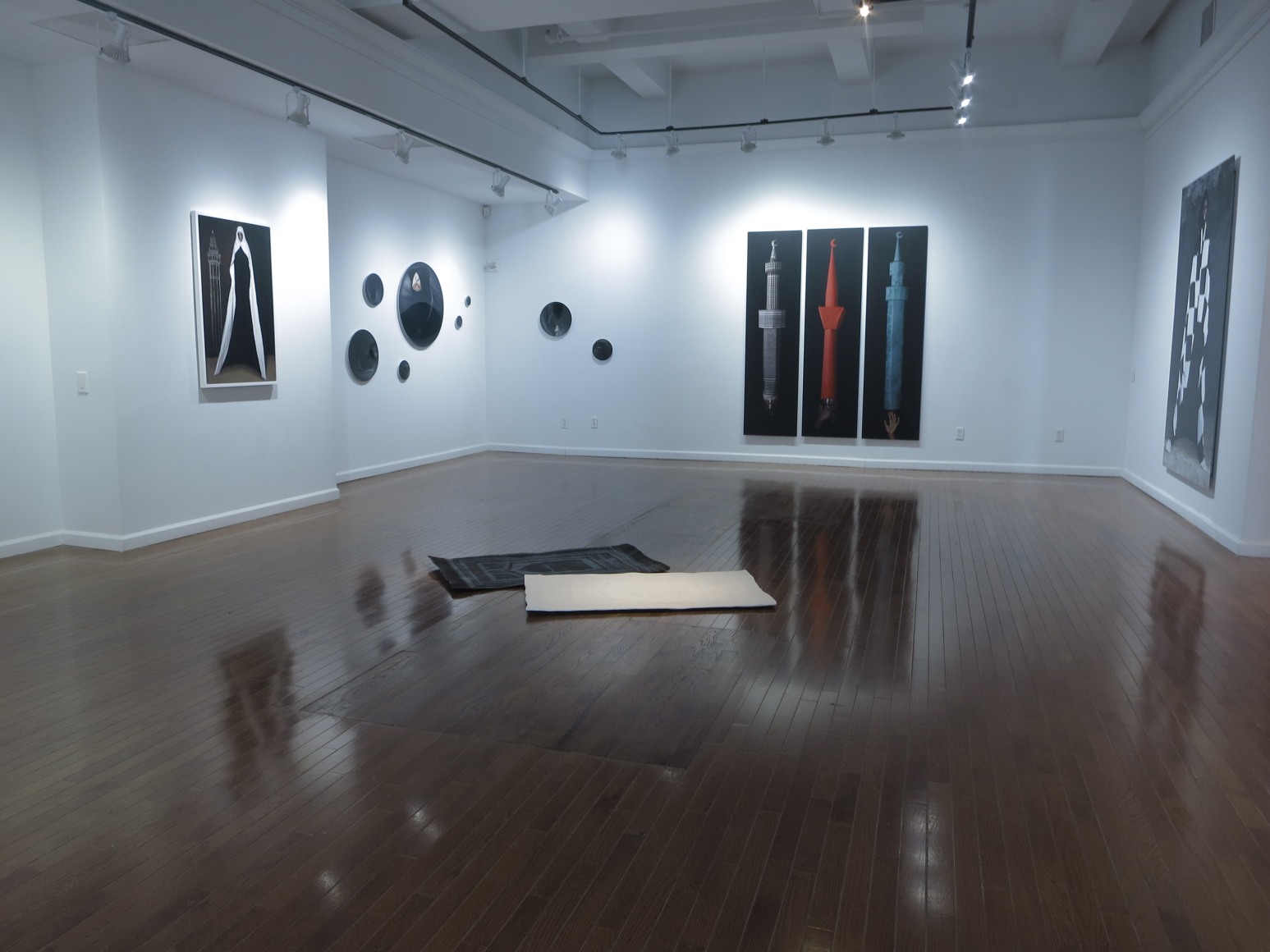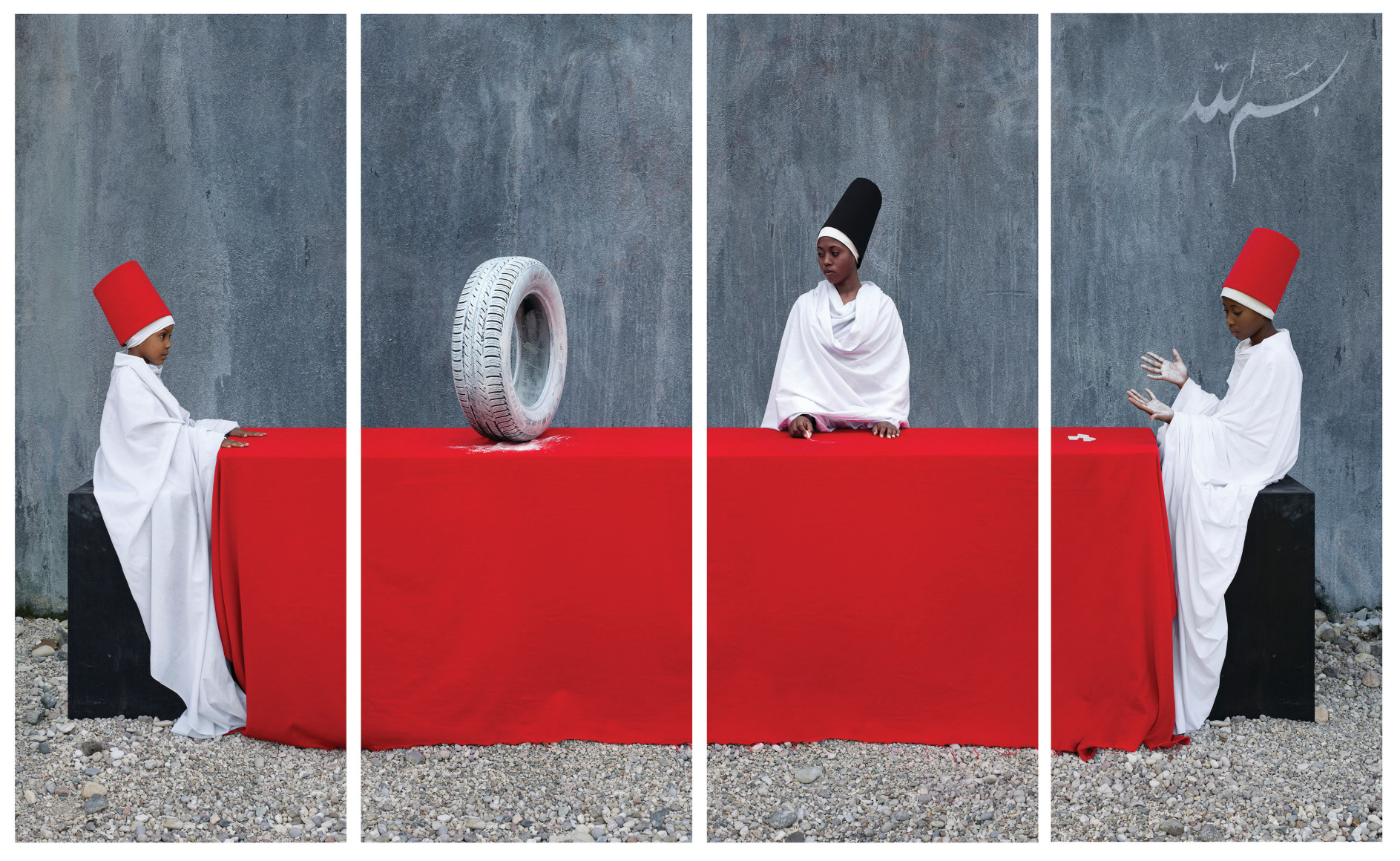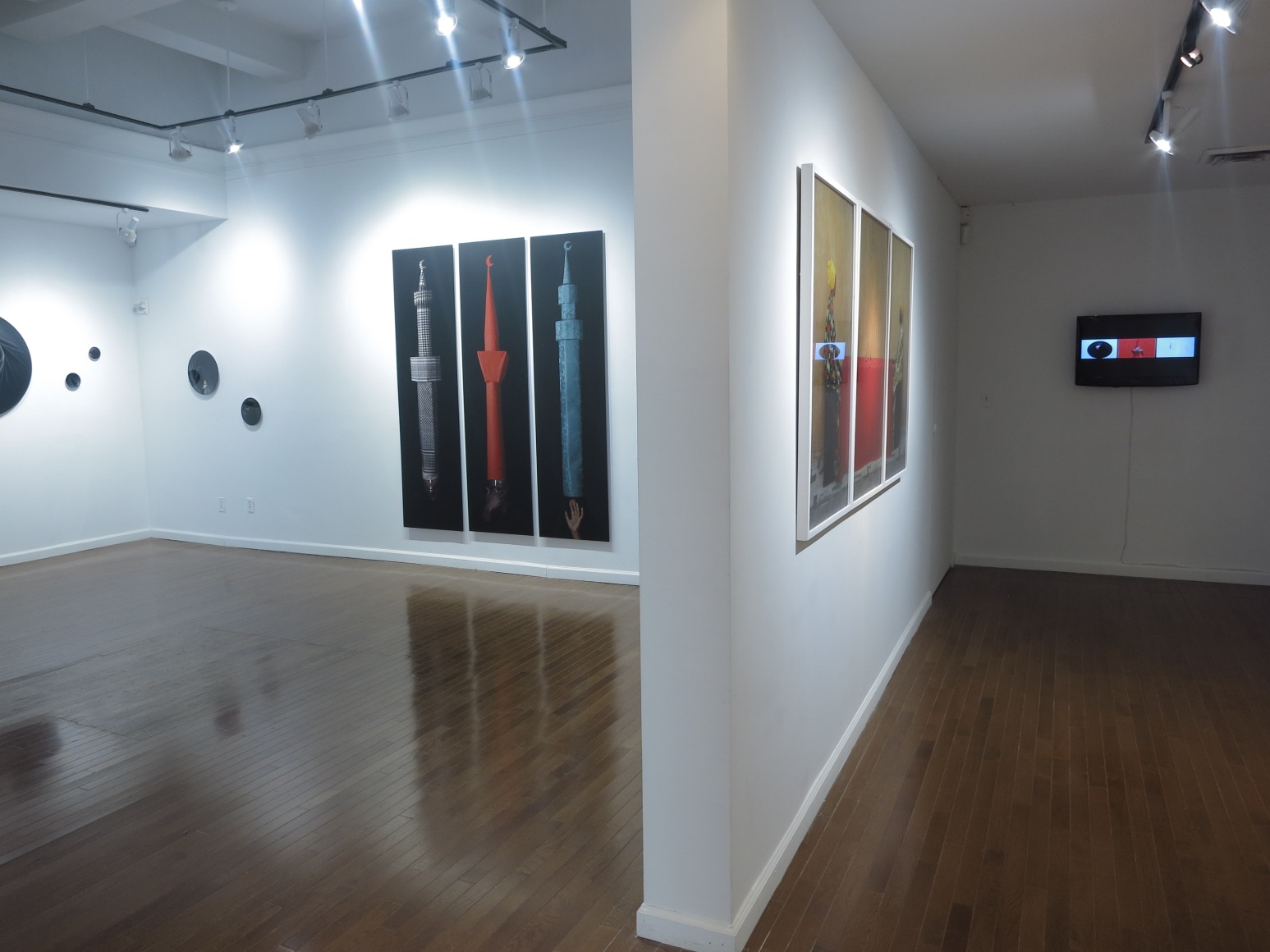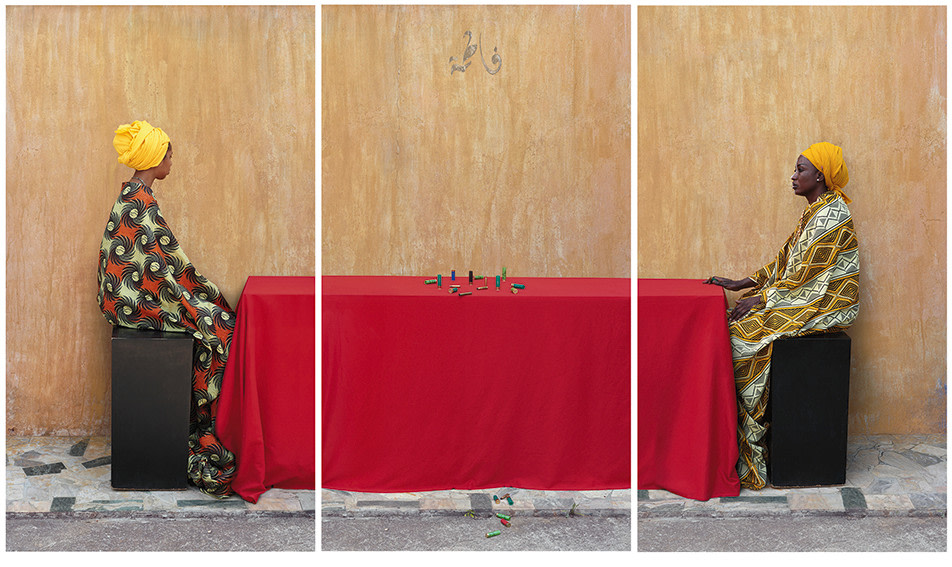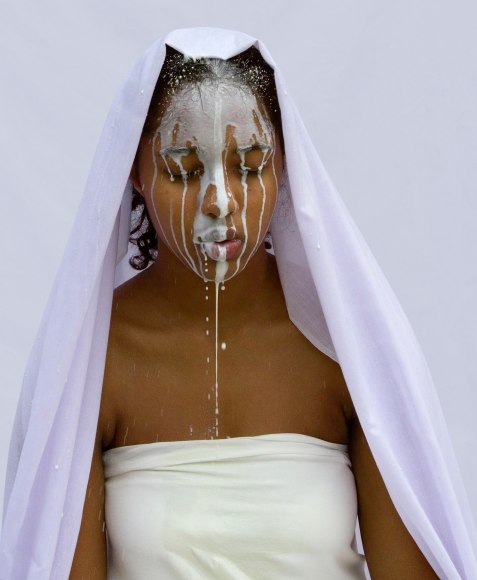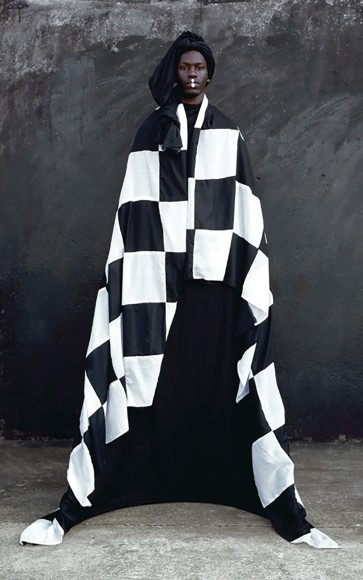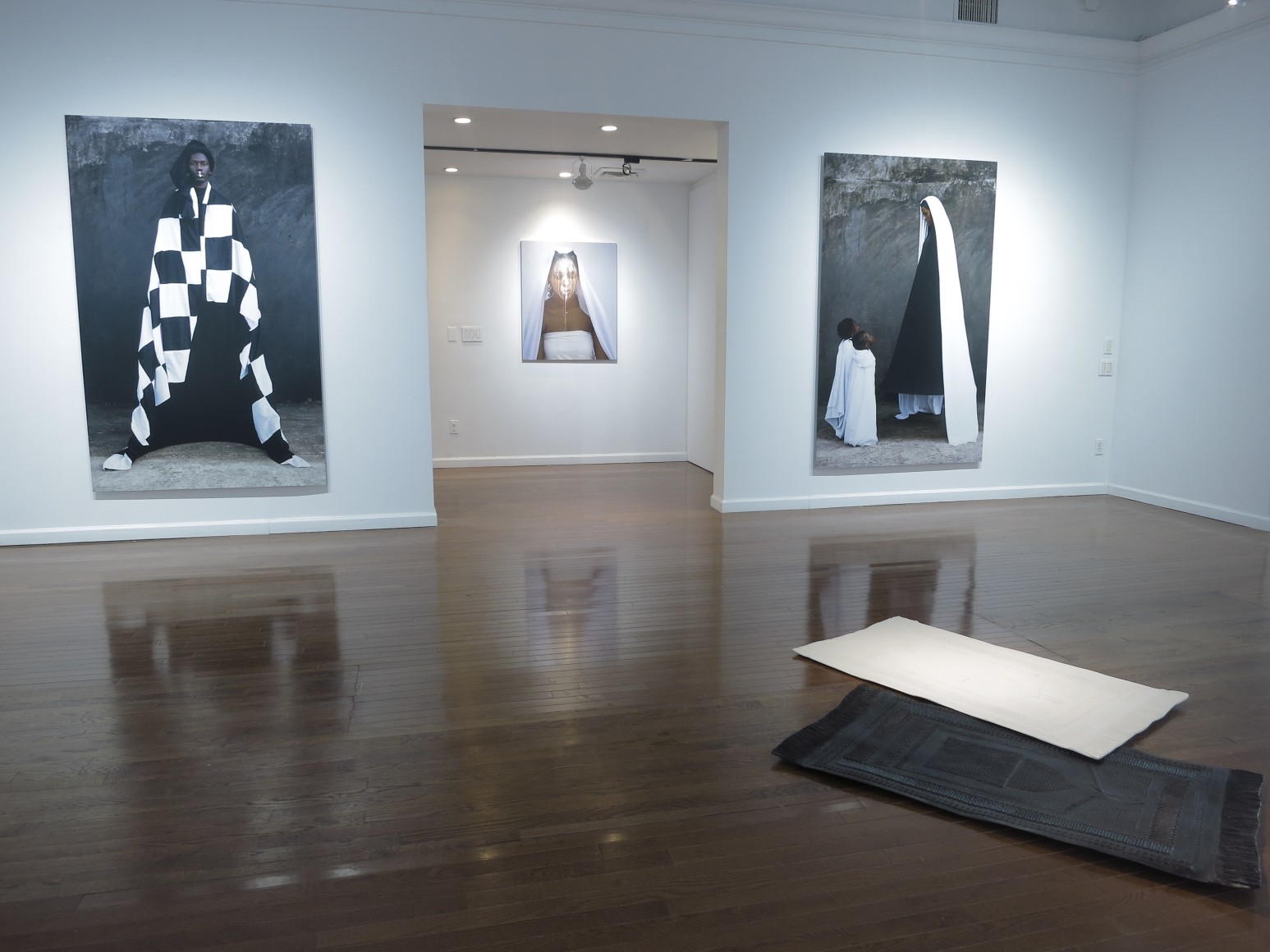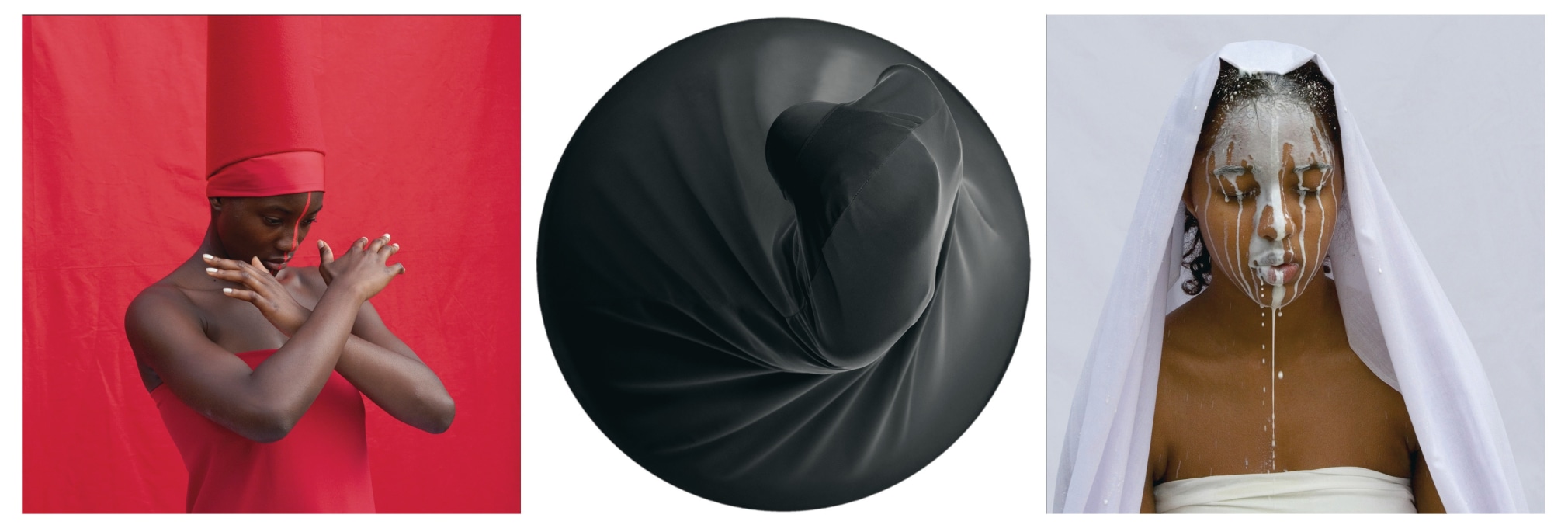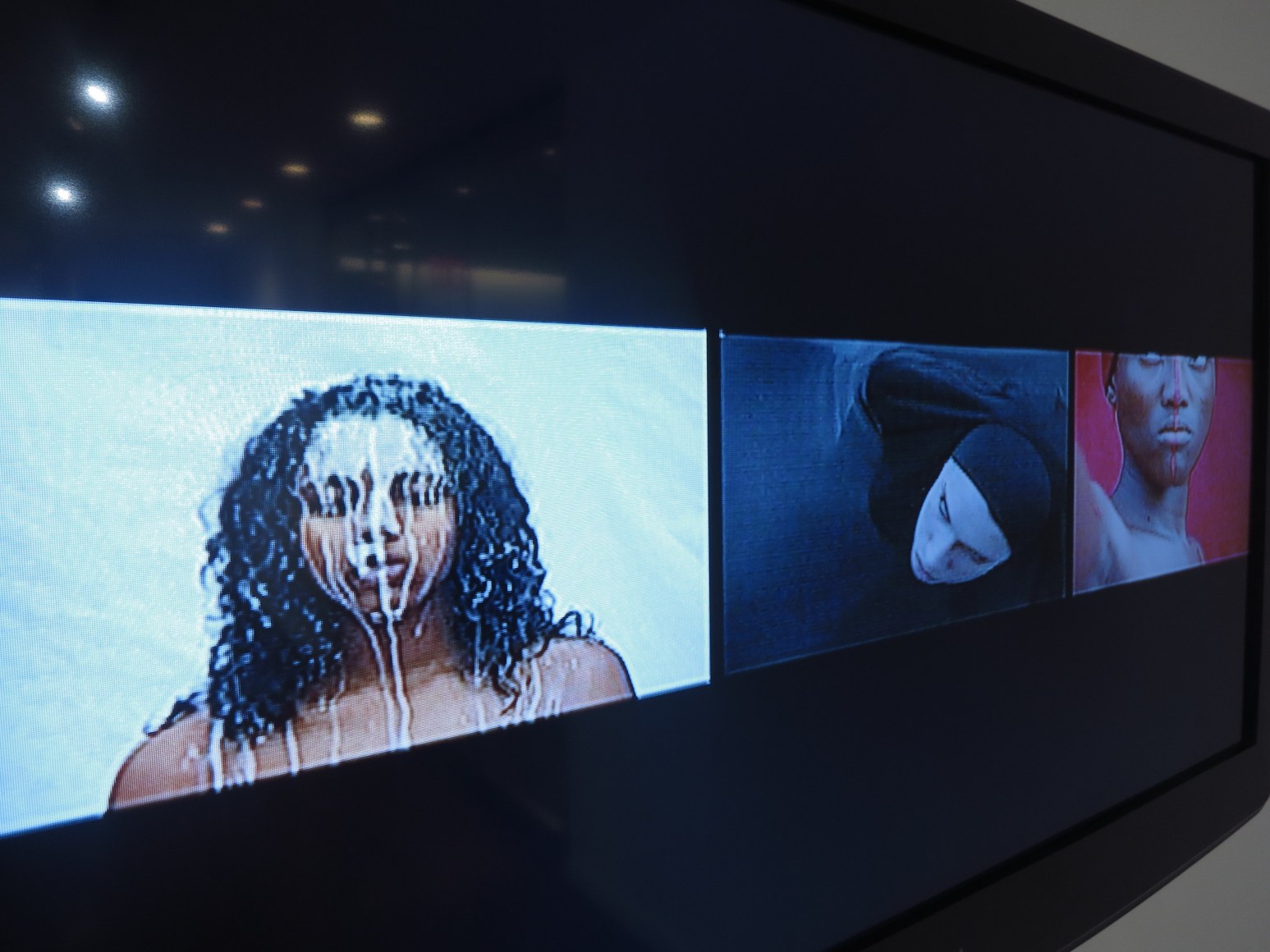STUX + HALLER is pleased to announce Maïmouna Guerresi: Sacred Dwellings, the second showing of her work at our gallery, with a selection of photography and sculpture from her recent body of work. This exhibition is done in collaboration with Mariane Ibrahim Gallery, Seattle WA.
Maïmouna Guerresi, an Italian-born artist who converted to Islam after living in Senegal, presents an intimate perspective on Sufi ideas of human beings in relation to their inner mystical dimensions. Guerresi’s images are delicate narratives with fluid sequencing, an appreciation of shared humanity beyond borders – psychological, cultural, and political. Recurrent metaphors such as milk, light, the hijab, trees, and contrasting white and black create awareness of the vital unifying qualities of Islamic Sufism.
Her photographs often depict mystical figures from Islamic Africa as spirit guides and ancestral symbols. In Sufi doctrine, our selves are dominated by three elements: the lower self, the spiritual heart, and the soul. In Guerresiʼs photographs, the lower self is transcended, and the cloak becomes a sculptural indicator of the boundaries of the inner soul. These figures have a common feature: while they tower in the frame and look hollow, ethereal, as if they have been emptied, they nevertheless exist as a sonorous head, soul, and cloak.
Guerresiʼs hybrid embrace of spirituality and ancestry, Europe and Africa, Christianity and Islam, is ultimately reflective of her embrace of the globalization in art and life. We often talk about a global international community, but few people truly reflect our interconnected world as flawlessly as Guerresi. Viewed through this lens, her figures and scenes take on a new light, a universal truth about community and the soul. The person here becomes a sacred dwelling, a meeting-place for humanity to re-discover its shared mystic body.
________________________________
Maïmouna Guerresi is a multimedia artist working with photography, sculpture, video, and installation. Her work has been extensively exhibited in solo and group shows all over Europe, Africa, the United States, Asia, and the Middle East. Guerresi was invited to participate in the Italian pavilion at the Venice Biennale in 1982-1986-2011 as well as Documenta K18 (1987) in Kassel, Germany. Her most recent museum shows include Islamic Art Now, Part II: Contemporary Art from the Middle East, Lacma Museum, Los Angeles, 2016; Re-signification, Museo Bardini, Florence, 2015; National Museum of Sharjah, UAE, 2014; National Museum of Bahrain, UAE, 2014; Biennale Chobi Mela, Dhakka, Bangladesh, 2013; F.A.R Museum in Rimini, Italy, 2013; Camhane Art Center, collateral exhibition for the Istanbul Biennal Turkey, 2013; Pole de la Photographie, France; Cultural Institute of Islam, Paris, France, 2013; National Institute of Design in Ahmedabad, India 2012; KIASMA Museum of Contemporary Art, Helsinki, Finland, 2011; French Institute, Fez, Morocco, 2011; Fondation Boghossian, Villa Empain, Brussels, 2011; Central Elecrique, Brussels, 2010; Biennal “Les Rencontres de Bamako” the National Museum of Bamako, Mali, 2009; Atlanta Contemporary Art Center, USA, 2004. Her work is included in private and public collections worldwide, including The Boghossian Foundation, Belgium; Museo dʼarte Contemporanea Palazzo della Ragione, Italy; European Investment Bank, Luxembourg; Tasveer Foundation, India; M.I.A Minneapolis Institute of Art, USA; and Lacma Museum, USA.

